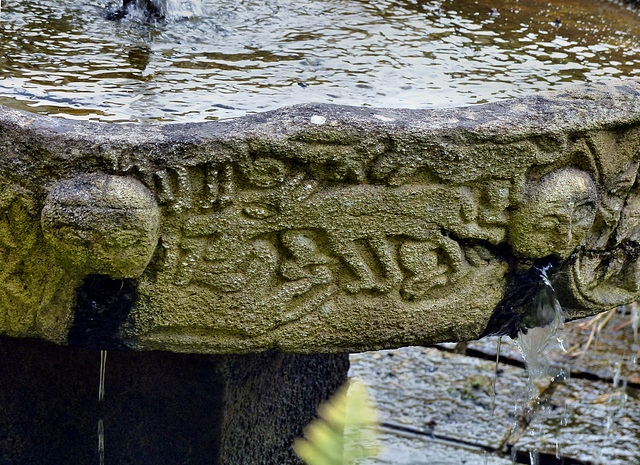Poullan-sur-Mer - Menhir
Poullan-sur-Mer - Dolmen
Poullan-sur-Mer - Notre-Dame-de-Kérinec
Confort-Meilars - Notre-Dame
Confort-Meilars - Notre-Dame
Confort-Meilars - Notre-Dame
Plovan - Saint-Gorgon
Plovan - Saint-Gorgon
Plovan - Chapelle de Languidou
Chapelle Notre-Dame de Tronoën
Chapelle Notre-Dame de Tronoën
Chapelle Notre-Dame de Tronoën
Chapelle Notre-Dame de Tronoën
Chapelle Notre-Dame de Tronoën
Chapelle Notre-Dame de Tronoën
Chapelle Notre-Dame de Tronoën
Chapelle Notre-Dame de Tronoën
Chapelle Notre-Dame de Tronoën
Plomeur - Chapelle de Beuzec
Plomeur - Groas Veur
Merlevenez - Notre-Dame-de-Joie
Merlevenez - Notre-Dame-de-Joie
Merlevenez - Notre-Dame-de-Joie
Daoulas - Abbaye Notre-Dame
Daoulas - Abbaye Notre-Dame
Daoulas - Abbaye Notre-Dame
Daoulas - Abbaye Notre-Dame
Daoulas - Abbaye Notre-Dame
Daoulas - Abbaye Notre-Dame
Lanmeur - Saint-Mélar
Lanmeur - Saint-Mélar
Lanmeur - Saint-Mélar
Lanmeur - Saint-Mélar
Lanmeur - Saint-Mélar
Lanmeur - Notre-Dame de Kernitron
Lanmeur - Notre-Dame de Kernitron
Lanmeur - Notre-Dame de Kernitron
Lanmeur - Notre-Dame de Kernitron
Perros-Guirec - Saint-Jacques
Perros-Guirec - Saint-Jacques
Perros-Guirec - Saint-Jacques
Perros-Guirec - Saint-Jacques
Perros-Guirec - Saint-Jacques
Perros-Guirec - Saint-Jacques
Perros-Guirec - Saint-Jacques
Location
Lat, Lng:
You can copy the above to your favourite mapping app.
Address: unknown
You can copy the above to your favourite mapping app.
Address: unknown
See also...
Keywords
Authorizations, license
-
Visible by: Everyone -
All rights reserved
-
183 visits
Daoulas - Abbaye Notre-Dame


A small convent, founded by Saint Jaoua, had existed here already within the 6th century. This got destroyed by during the Norman raids.
Around 1100 an abbey (Augustin Canons) was founded and prospered at least over the first centuries. Already before the French Revolution, most buildings were in very bad condition, but after the Revolution, when the last Canons had left, the parish was unable to maintain the structures. End of the 19th century, after lots of valuable works had vanished, a major reconstruction took place - and saved, what can be seen today.
The basilica was the church of the former abbey, before it was transformed into the parish church. The structure partly collapsed in the late 18th century. A crossing tower was demolished after the French Revolution, when the church was in "Private property". The choir was added/reconstructed in 1875.
The cloister, erected within the 12th century, was sold the first time in 1793 and changed hands quite often after that. Some of the owners demolished parts -and sold them. When the reconstruction and renovation started in 1881, there were only two crumbling sides left.
The octagonal fountain, seen here, was probably placed in the cloister since the 12th century, used for ablutions in medieval times. The fountain is decorated with masks and lots of geometric patterns, but on one side depicts a dog (with a puppy?). Louise-Marie Tillet ("Bretagne Romane") sees Irish influences
Around 1100 an abbey (Augustin Canons) was founded and prospered at least over the first centuries. Already before the French Revolution, most buildings were in very bad condition, but after the Revolution, when the last Canons had left, the parish was unable to maintain the structures. End of the 19th century, after lots of valuable works had vanished, a major reconstruction took place - and saved, what can be seen today.
The basilica was the church of the former abbey, before it was transformed into the parish church. The structure partly collapsed in the late 18th century. A crossing tower was demolished after the French Revolution, when the church was in "Private property". The choir was added/reconstructed in 1875.
The cloister, erected within the 12th century, was sold the first time in 1793 and changed hands quite often after that. Some of the owners demolished parts -and sold them. When the reconstruction and renovation started in 1881, there were only two crumbling sides left.
The octagonal fountain, seen here, was probably placed in the cloister since the 12th century, used for ablutions in medieval times. The fountain is decorated with masks and lots of geometric patterns, but on one side depicts a dog (with a puppy?). Louise-Marie Tillet ("Bretagne Romane") sees Irish influences
- Keyboard shortcuts:
Jump to top
RSS feed- Latest comments - Subscribe to the comment feeds of this photo
- ipernity © 2007-2025
- Help & Contact
|
Club news
|
About ipernity
|
History |
ipernity Club & Prices |
Guide of good conduct
Donate | Group guidelines | Privacy policy | Terms of use | Statutes | In memoria -
Facebook
Twitter

Sign-in to write a comment.